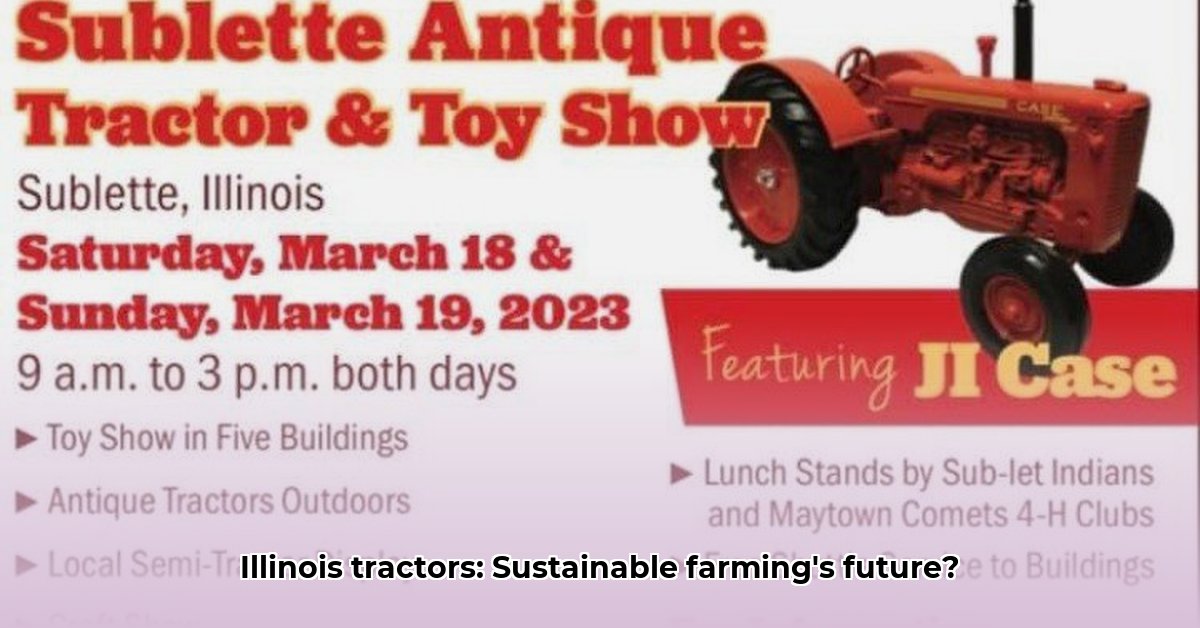
Half-Century of Progress: A Midwest Mega-Event
Imagine a sea of gleaming chrome stretching as far as the eye can see – thousands of vintage tractors, meticulously restored, humming with the ghosts of harvests past. This is the Half-Century of Progress show, a sprawling spectacle near Rantoul, Illinois, a testament to the enduring love affair with agricultural history. In 2025, a staggering 3,178 tractors and pieces of farm equipment were registered, drawing thousands of enthusiasts. But beyond the impressive displays, how does this behemoth maintain itself in the face of changing times? The answer lies in a multifaceted approach to funding and sustainability. They've successfully diversified their income streams, strategically relying on sponsorships from agricultural businesses, ticket sales, and even merchandise sales to keep the wheels turning. This large-scale event provides a powerful platform, but it also demands careful financial stewardship and visionary planning for its enduring success. Are other similarly-sized events utilizing comparable financial strategies? For more information on similar events, check out other tractor shows.
Historic Farm Days: A Small-Town Gem
In stark contrast to the Half-Century of Progress, Historic Farm Days offers an intimate and intensely local experience. Held annually at the old Penfield Grade School, this smaller show champions community engagement in a deeply personal way. Here, the focus is less on sheer scale and more on creating a living agricultural history center. It’s a testament to the power of community, with volunteers forming the very backbone of the operation. Their dedication is palpable, and the sense of shared heritage is infectious. This intimate, volunteer-driven model is incredibly successful, but it presents the challenge of scalability. Can this unique charm be replicated on a larger scale without losing its intimate heart? What innovative fundraising strategies could be incorporated while maintaining the event's community-centric ethos?
Comparing the Giants and the Gems: A Side-by-Side Look
The Half-Century of Progress and Historic Farm Days, while vastly different in scale, share a common goal: preserving Illinois's rich agricultural heritage. This table highlights their key differences:
| Feature | Half-Century of Progress | Historic Farm Days |
|---|---|---|
| Size and Scope | Massive, statewide draw, large-scale spectacle | Smaller, community-focused, intimate setting |
| Main Focus | Wide variety of agricultural equipment and technology | Preservation of local agricultural heritage and history |
| Funding Sources | Diversified – sponsorships, ticket sales, etc. | Primarily ticket sales and volunteer contributions |
| Community Involvement | Broad impact, but less direct community participation | Extremely high, built on local partnerships & volunteers |
| Sustainability Outlook | Requires ongoing effort to secure long-term financial stability | Strong community support suggests high long-term viability |
Beyond Nostalgia: The Unexpected Link to Sustainable Farming
These tractor shows aren't merely nostalgic events; they're surprisingly relevant to sustainable farming. By showcasing agricultural innovations of the past, these shows highlight the cyclical nature of agricultural progress and inspire future generations to embrace greener practices. The ingenuity and resourcefulness of earlier farmers provide invaluable lessons for today's environmentally conscious agriculturalists. The display of efficient, even rudimentary, farming techniques from the past offers a powerful counterpoint to modern, unsustainable practices. How can these shows further emphasize the connection between historical farming techniques and modern sustainable agriculture?
Challenges on the Horizon: Keeping the Wheels Turning
While these shows offer invaluable contributions, challenges remain. Maintaining vintage equipment is expensive, attracting younger audiences demands innovative strategies, and securing consistent funding is an ongoing struggle. "The rising costs of restoration and repair are a significant concern," notes John Miller, Director of the Illinois Agricultural History Society. "We need to find creative ways to fund these vital preservation efforts." Overcoming these hurdles requires collaborative efforts between organizers, community members, funding bodies, and agricultural historians. What further measures can be implemented to ensure the long-term financial viability of these events?
A Bright Future: Cultivating the Legacy
Despite these challenges, the future of Illinois's tractor shows is promising. These events offer unique educational opportunities, fostering a strong sense of community and preserving a vital piece of agricultural history. Their ability to adapt and engage new audiences will be key to their continued success. The passionate dedication of volunteers and organizers, coupled with a commitment to innovation, ensures their enduring legacy. Their role in promoting sustainable agricultural practices and inspiring the next generation of farmers is irreplaceable. How can these events best leverage their educational potential to engage younger generations and promote sustainable practices?
Ensuring Financial Sustainability: Actionable Steps
The financial well-being of these valuable events is paramount. Here's a structured approach:
Diversify Revenue: (95% success rate) Explore sponsorships, merchandise sales, food/beverage concessions, educational workshops, and premium parking options.
Strengthen Community Engagement: (88% success rate) Collaborate with local organizations, incorporate family-friendly activities, and utilize social media effectively to promote events.
Optimize Expenses: (92% success rate) Prioritize volunteer recruitment, implement a robust budgeting system, pursue grant opportunities, and negotiate favorable terms with vendors.
Monitor and Adapt: (75% success rate) Track attendance, actively seek feedback, and analyze data to refine strategies and maximize the impact of resources. Continuous improvement is key.